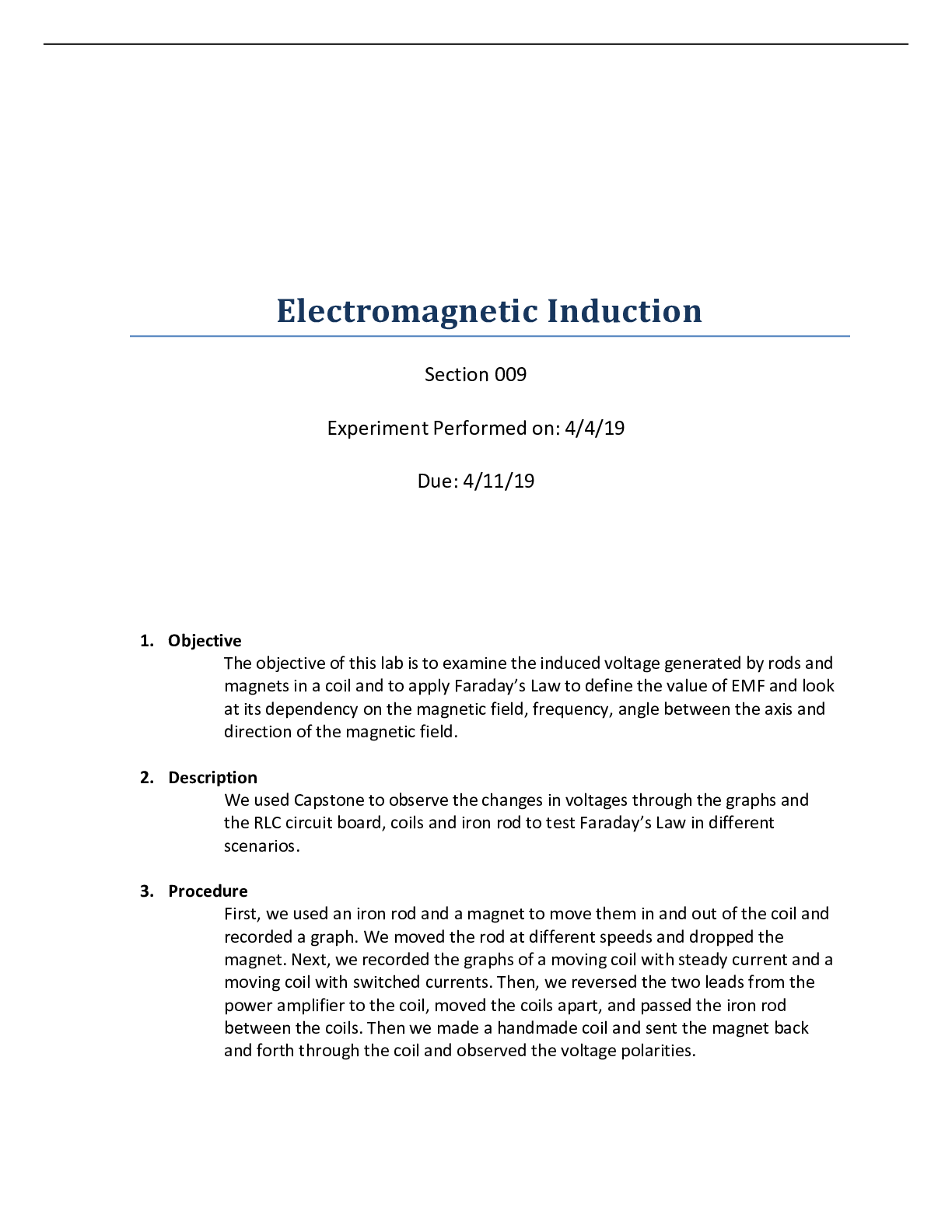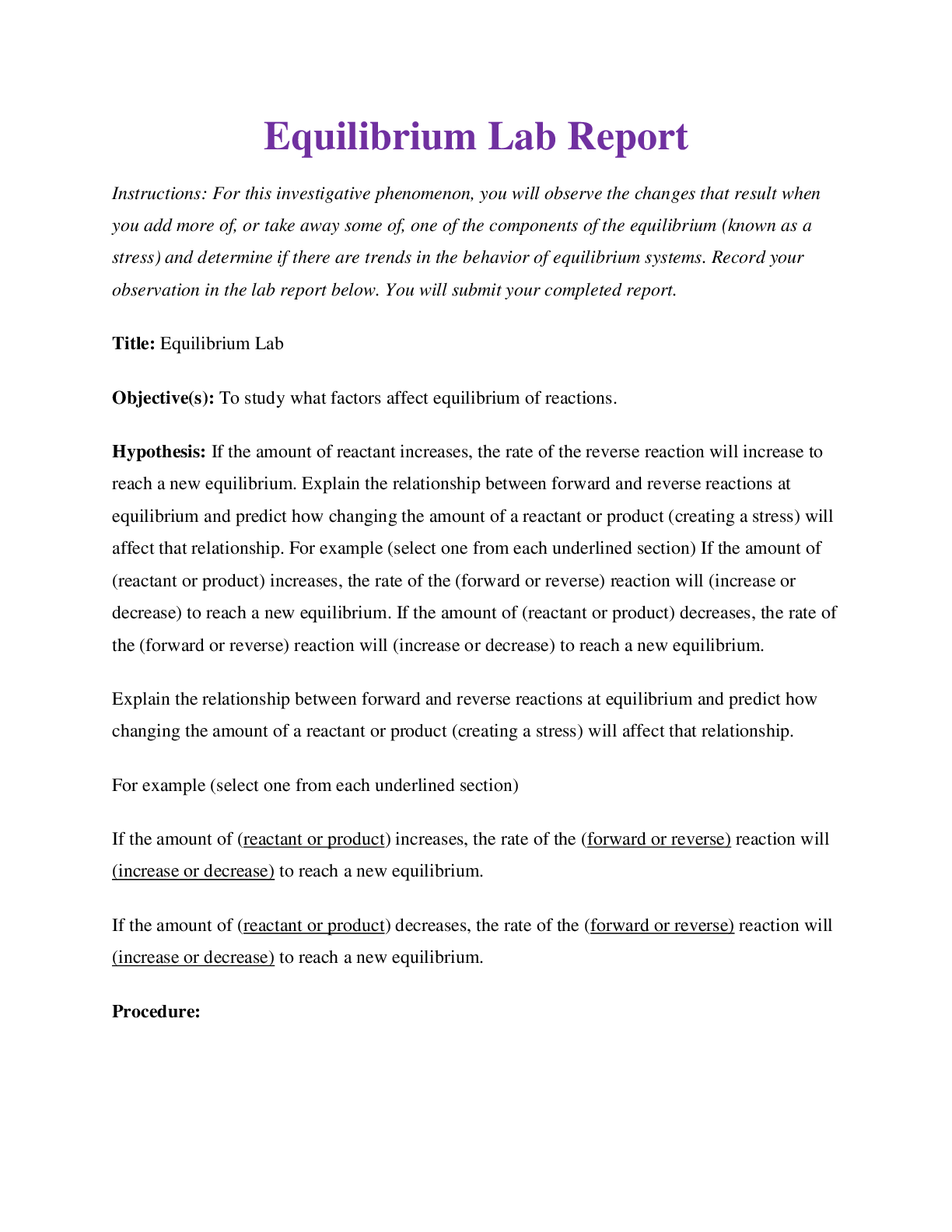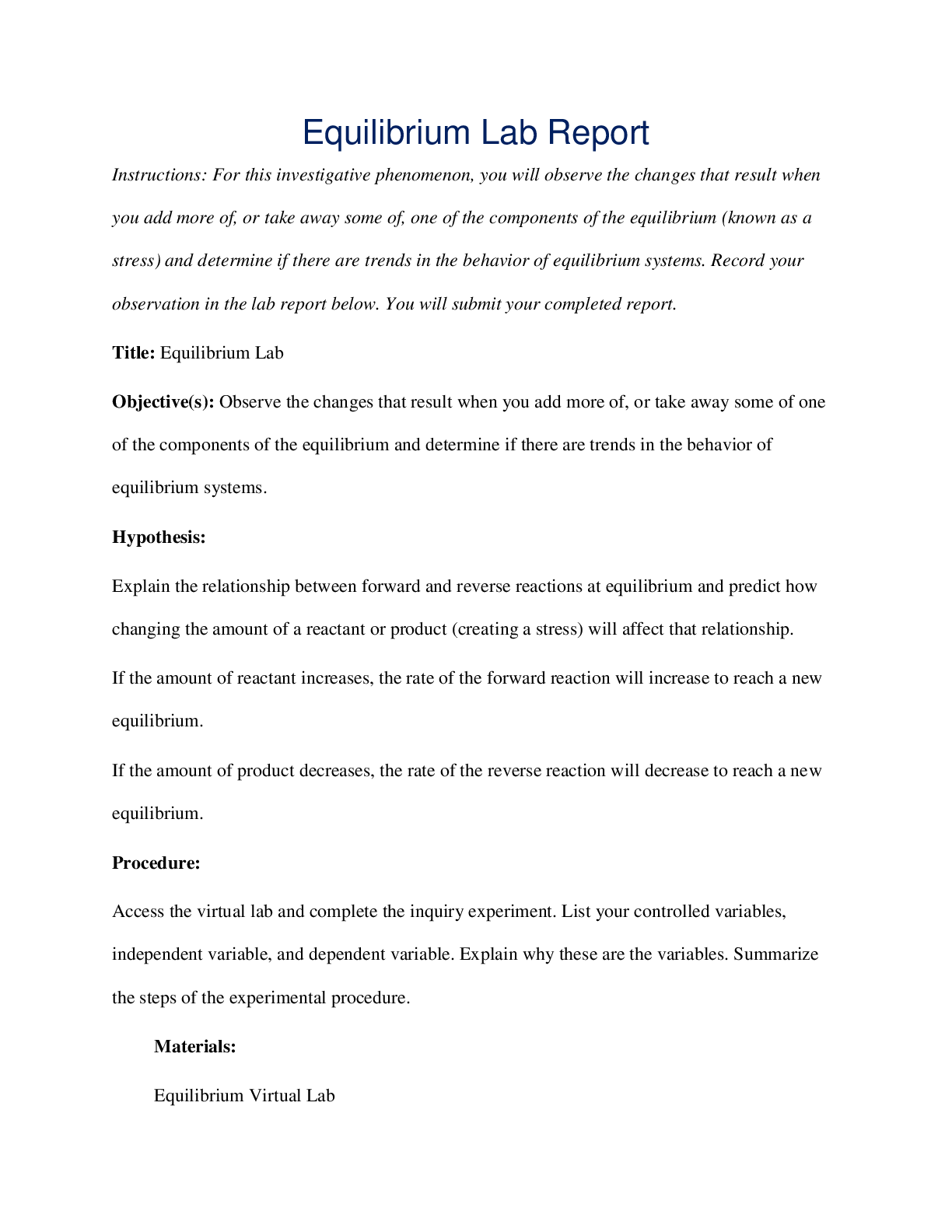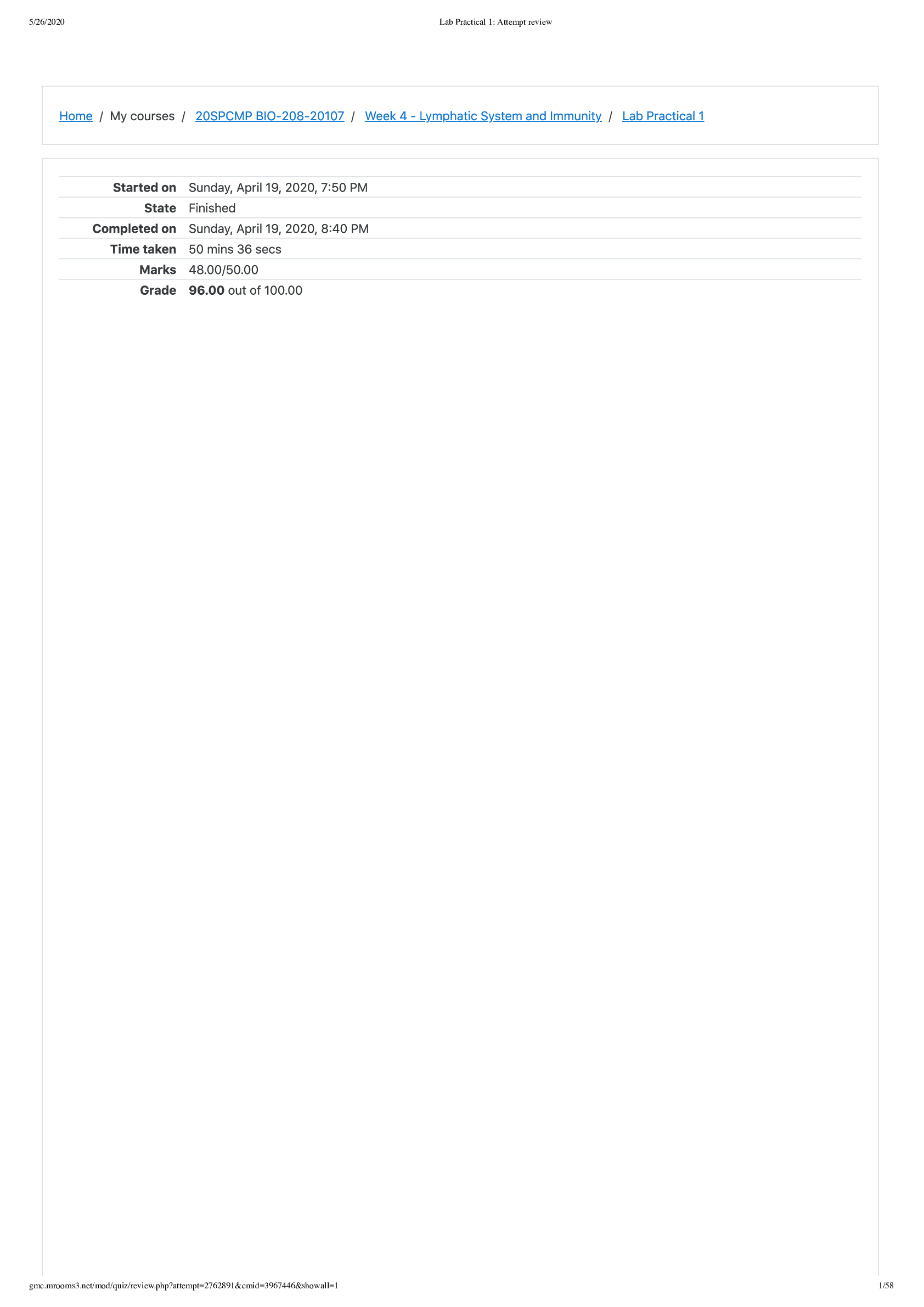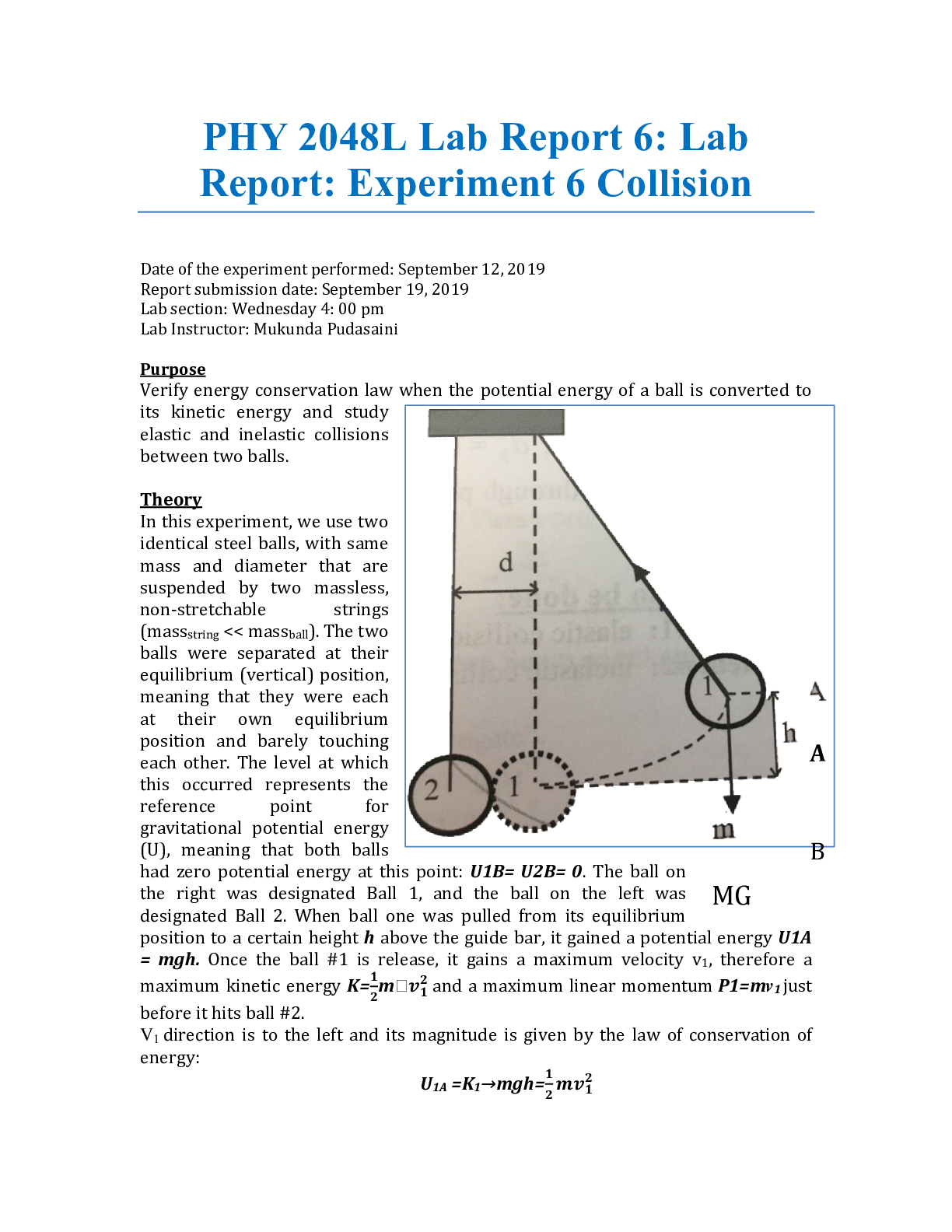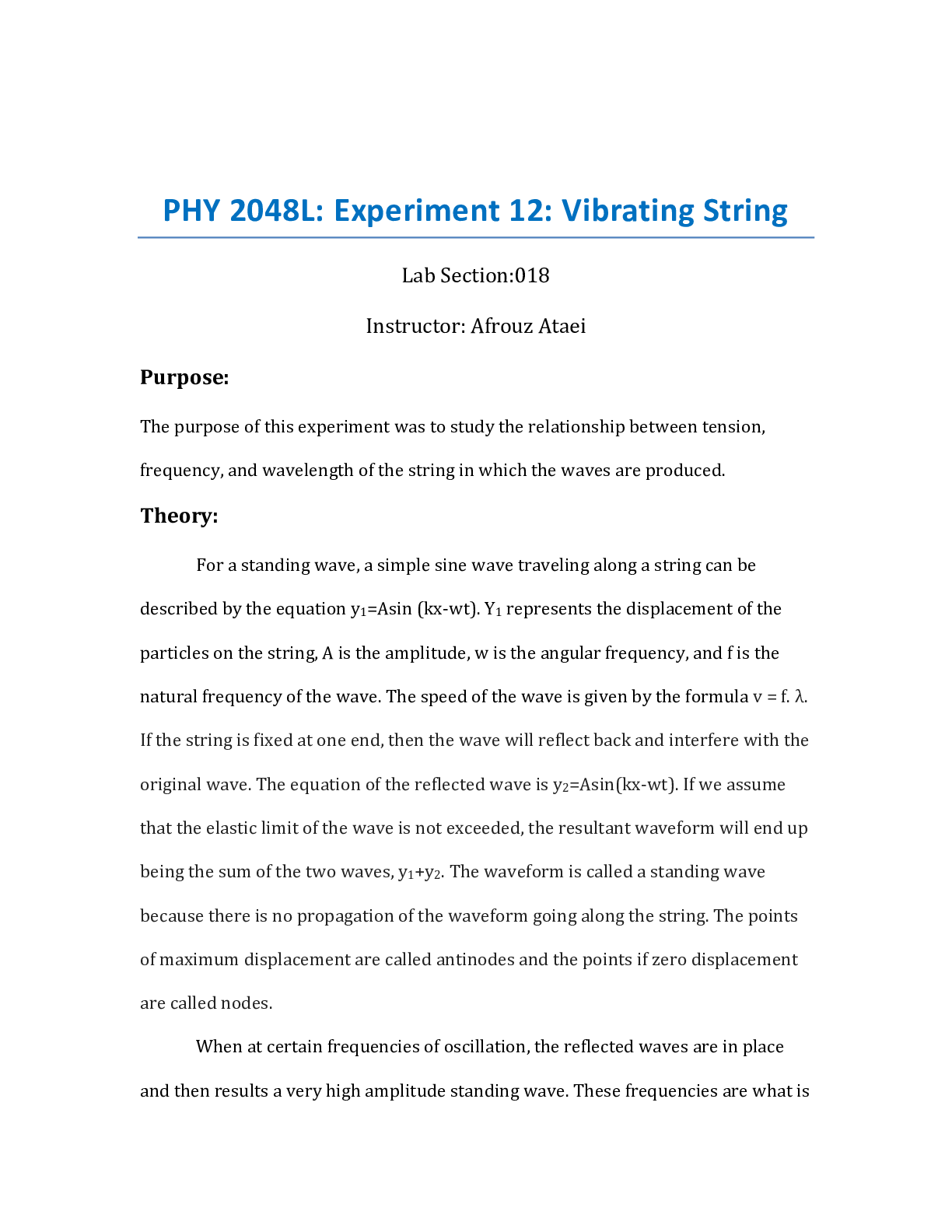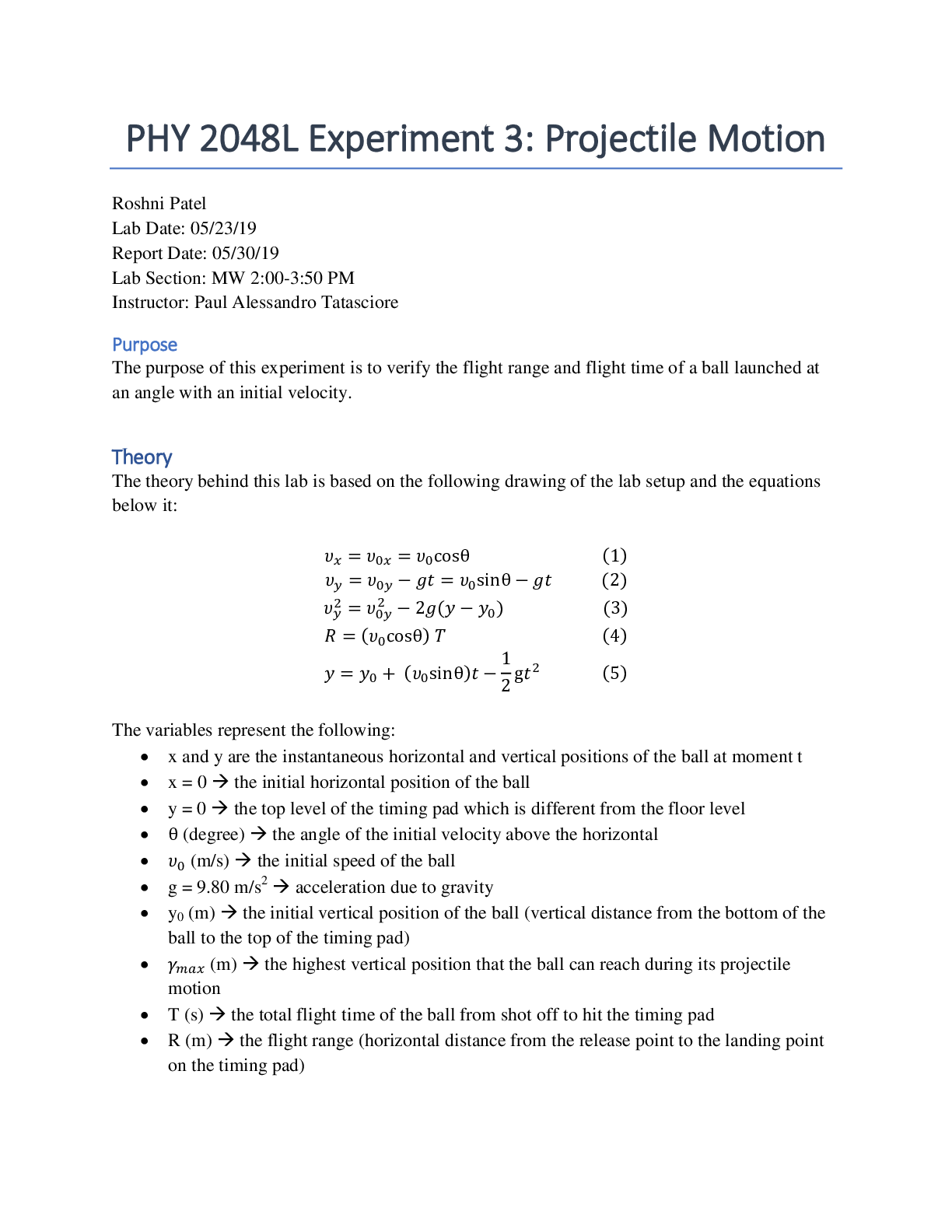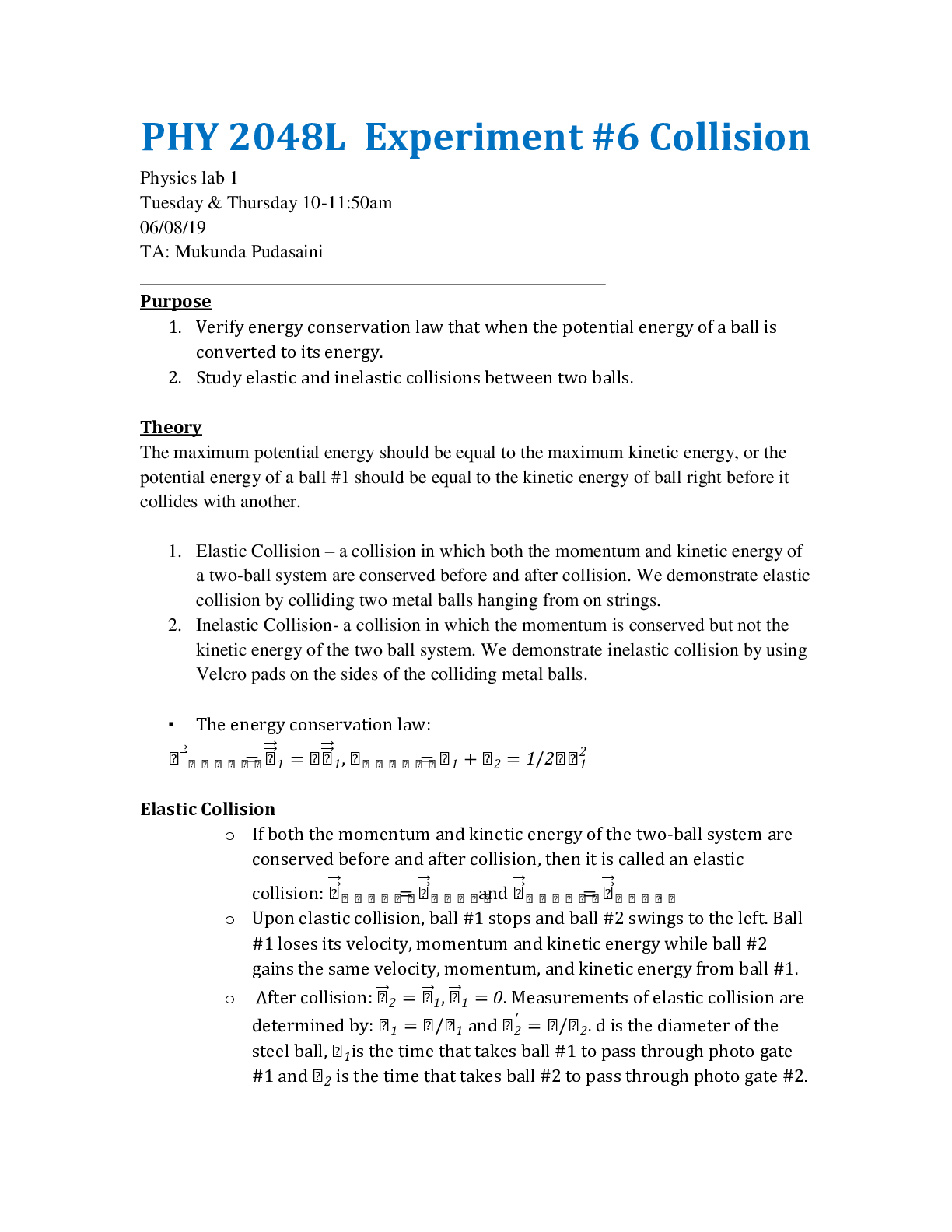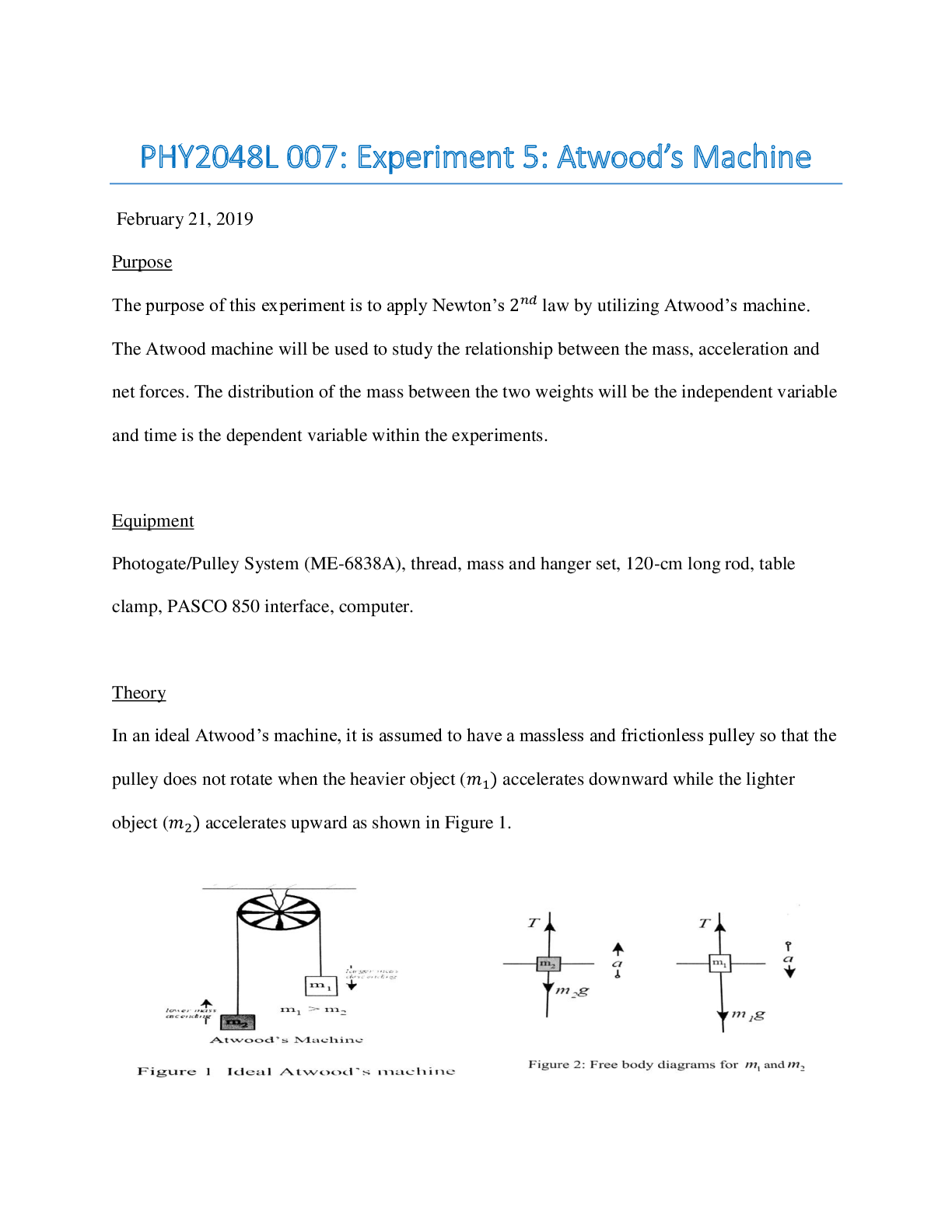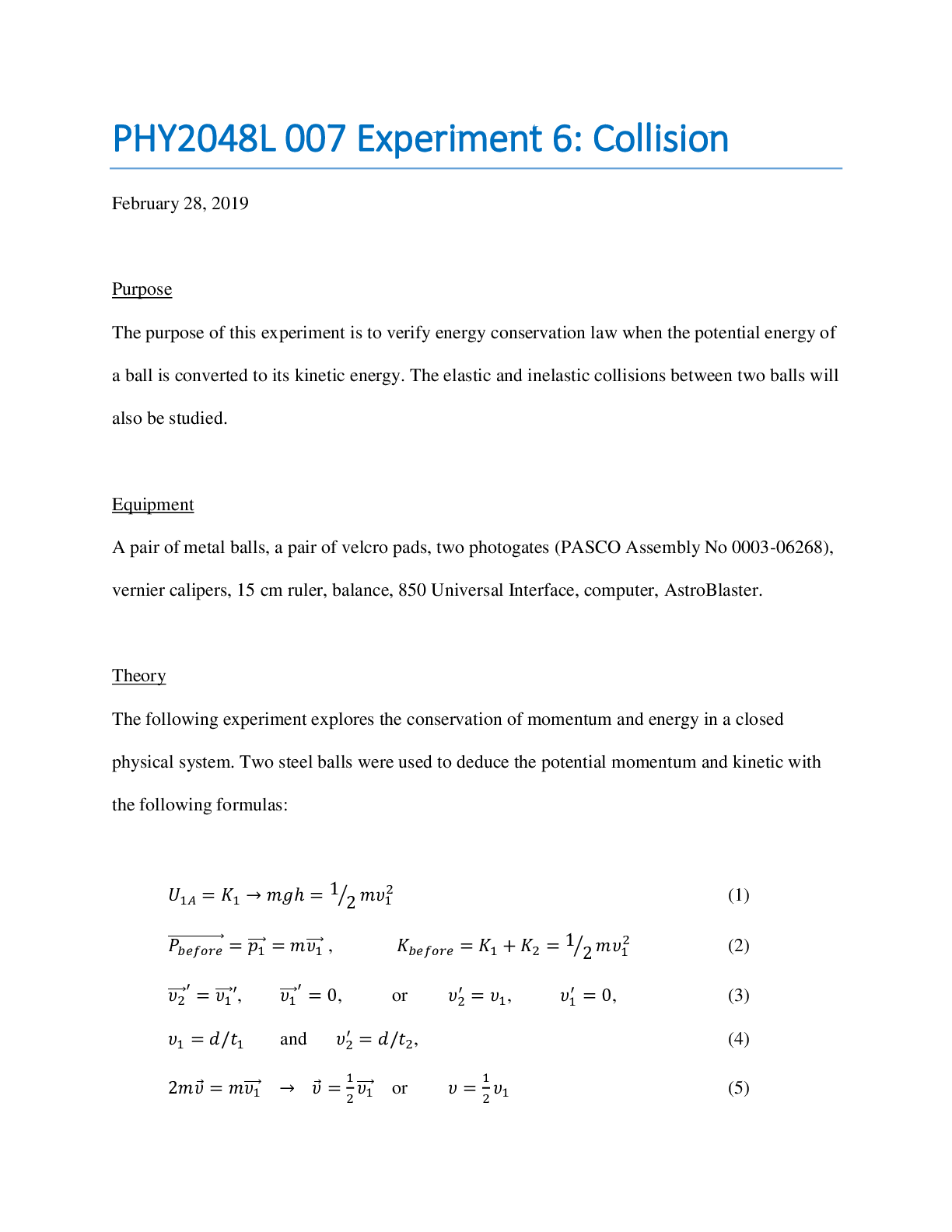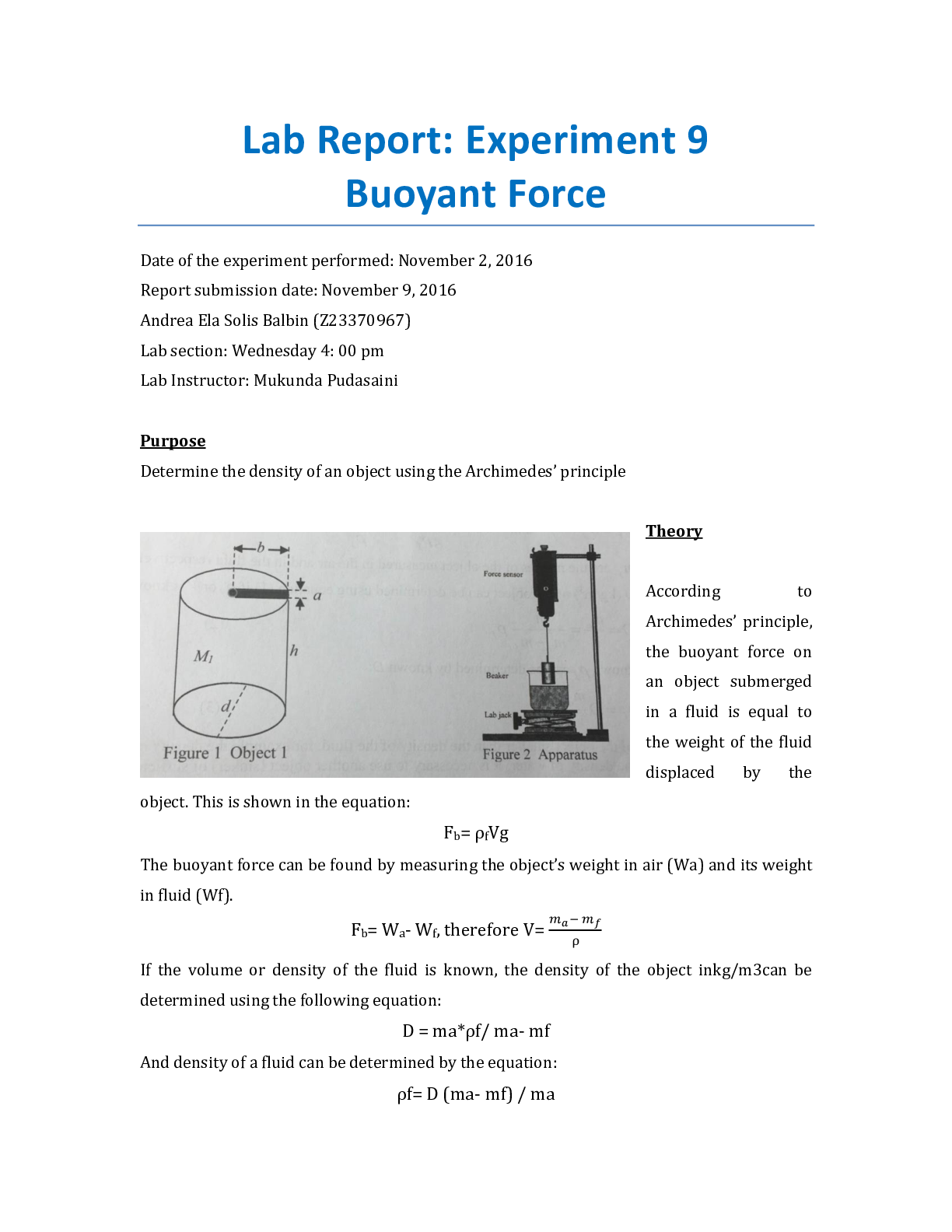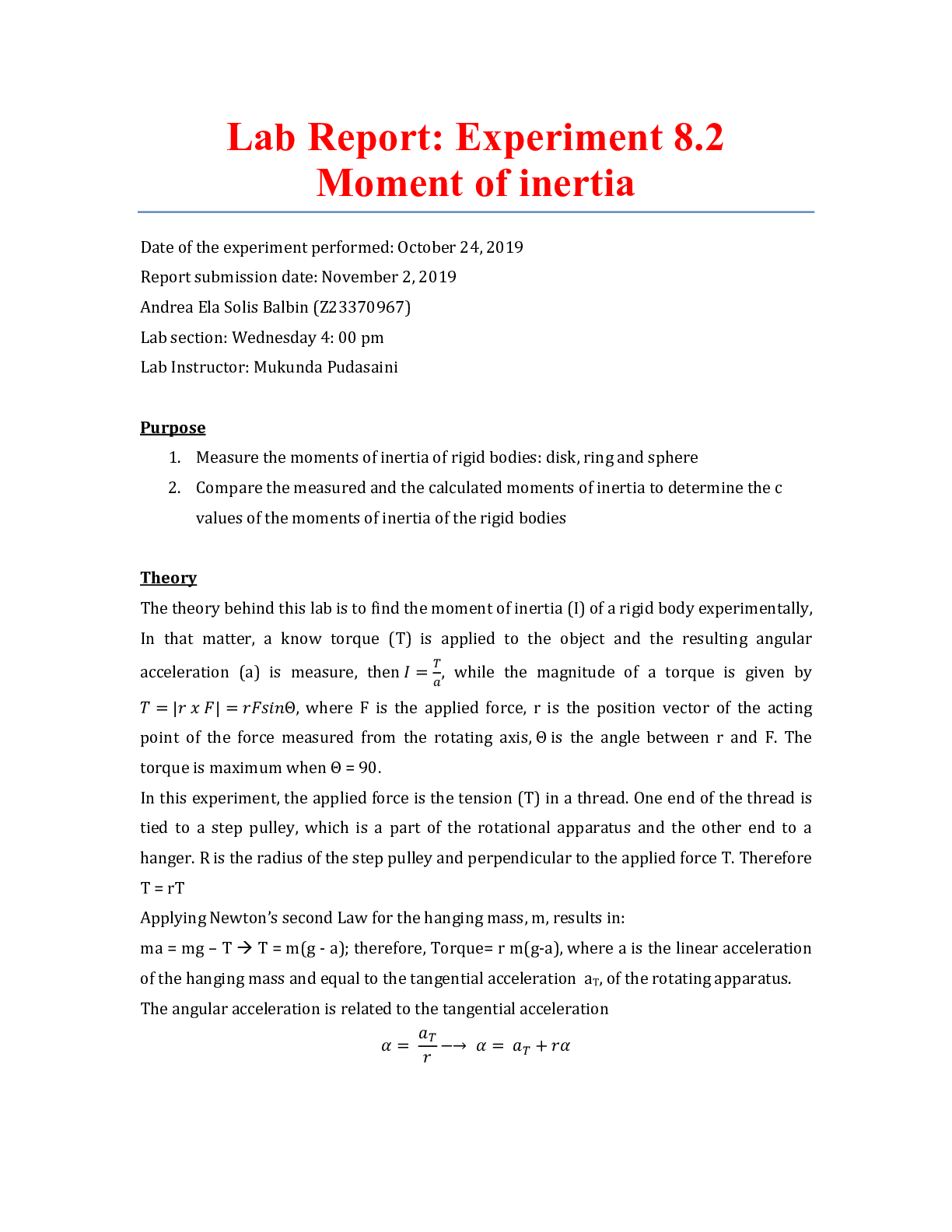Physics > Lab Report > Florida Atlantic University - PHY 2048LLab Report 4. Experiment 4: Force table: Add a set of vecto (All)
Florida Atlantic University - PHY 2048LLab Report 4. Experiment 4: Force table: Add a set of vectors using three methods: graphical, analytical and experimental to find the resultant vector.
Document Content and Description Below
Lab Report: Experiment 4: Force table Purpose Add a set of vectors using three methods: graphical, analytical and experimental to find the resultant vector. Theory The theory behind this lab ... activity is to learn about scalars, vectors, addition of vectors, and the correct use of a force table. Scalar is a quantity that can be specified by its magnitude alone such as time (t), mass (m), volume (V), etc. Meanwhile, a vector is a quantity that must be specified by both its magnitude and direction such as force (F), velocity (v), acceleration of gravity (g), etc. Vectors are represented by a top arrow, which indicates that force is a vector. The last way to add or subtract vectors is by experimentation, by using a force table. A force table is an apparatus that allows the experimental determination of the resultant force. The rim of the circular table is calibrated in degrees and weight forces are applied to a central ring by means of strings running over pulleys and attached to weight hangers. The magnitude of a force is varied by adding or removing slotted weights and the direction is varied by moving the pulley. The resultant force of two or more forces is found by balancing the forces with another force so that the ring is centered on the central pin. The balancing force is the equilibrium, the force that balances the other forces and holds the ring in the middle. The equilibrant is the vector force of equal magnitude but in the opposite direction of the resultant Apparatus: Force table with pulleys, weight hangers, a set of slotted weights (masses), string, protractor, rulers (15 cm and 30 cm), bubble level, graph papers. Results Table 1: Results of Measurement #1: F1: 200g at 30.00; F2: 200g at 120.00 Discussion and conclusion Questions Use the data (magnitude and direction) of F1 and F2 obtained in the Measurement #1 to find out the magnitude and direction of the resultant vector F1 –F2 [Show More]
Last updated: 1 year ago
Preview 1 out of 4 pages
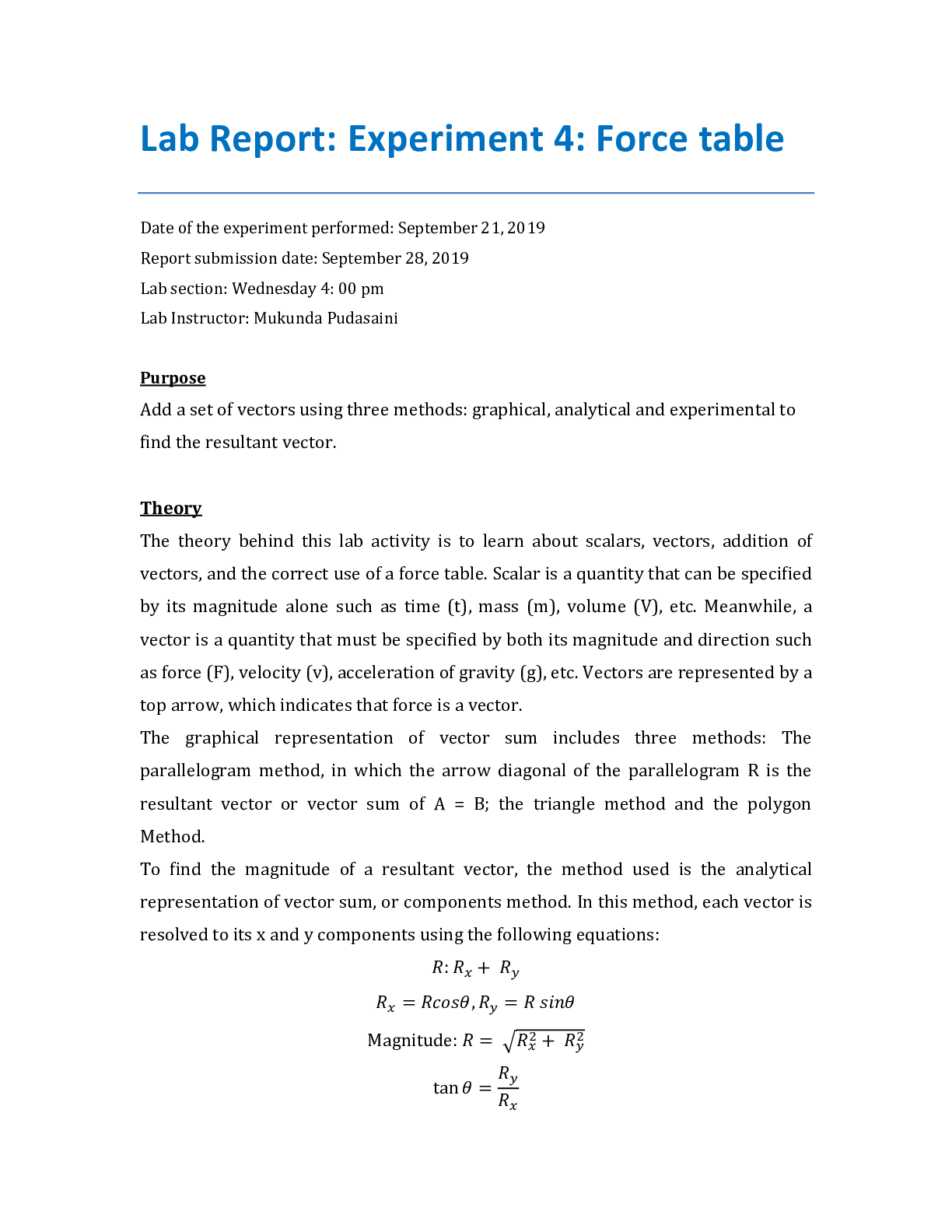
Reviews( 0 )
Document information
Connected school, study & course
About the document
Uploaded On
Oct 01, 2020
Number of pages
4
Written in
Additional information
This document has been written for:
Uploaded
Oct 01, 2020
Downloads
0
Views
462


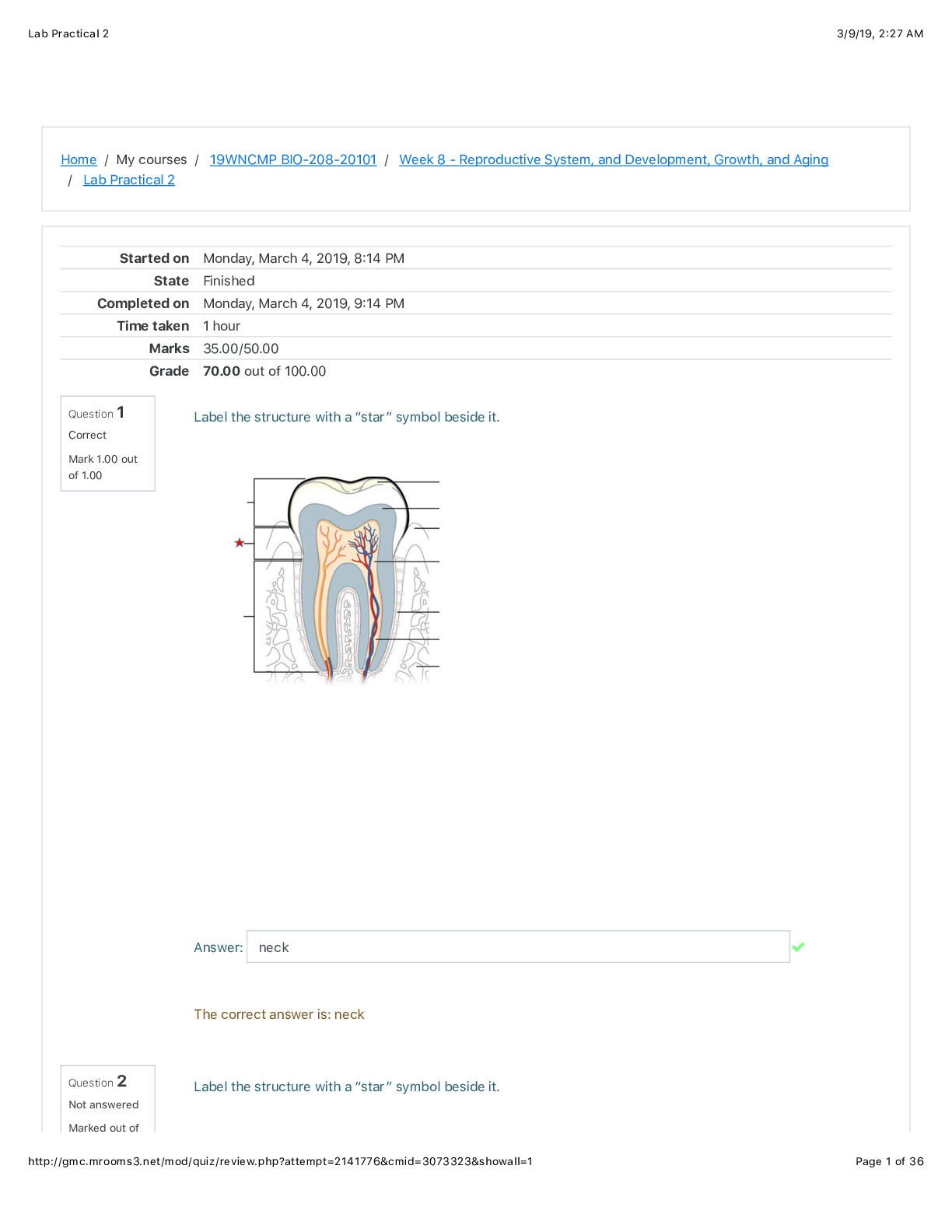
 (1).png)
